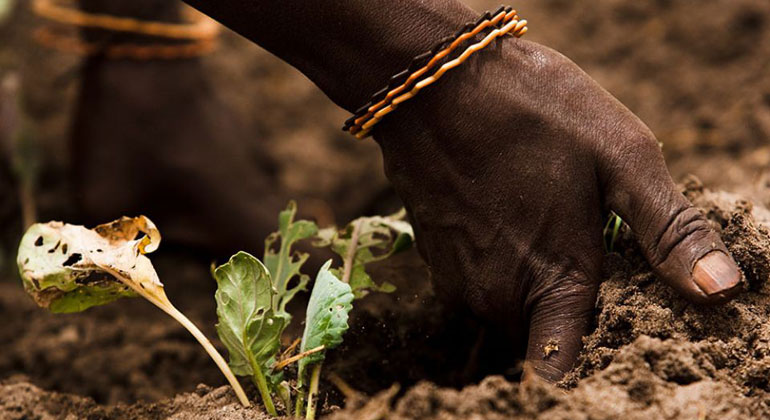Nothing dirty here: FAO kicks off International Year of Soils 2015
Healthy soils are critical for global food production, but we are not paying enough attention to this important “silent ally,” FAO Director-General José Graziano da Silva said on the eve of World Soil Day, to be celebrated on 5 December.
Healthy soils not only are the foundation for food, fuel, fibre and medical products, but also are essential to our ecosystems, playing a key role in the carbon cycle, storing and filtering water, and improving resilience to floods and droughts, he noted.
The UN has declared 2015 the International Year of Soils. The year will be kicked off tomorrow at events in Rome, New York and Santiago de Chile, in an effort to raise awareness and promote more sustainable use of this critical resource.
“Today, we have more than 805 million people facing hunger and malnutrition. Population growth will require an approximately increase of 60 percent in food production. As so much of our food depends on soils, it is easy to understand how important it is to keep them healthy and productive,” Graziano da Silva said, adding: “Unfortunately, 33 percent of our global soil resources are under degradation and human pressures on soils are reaching critical limits, reducing and sometimes eliminating essential soil functions.”
“I invite all of us to take an active role in promoting the cause of soils during 2015 as it is an important year for paving the road towards a real sustainable development for all and by all,” he added.
Soils – key resource at risk
FAO estimates that a third of all soils are degraded, due to erosion, compaction, soil sealing, salinization, soil organic matter and nutrient depletion, acidification, pollution and other processes caused by unsustainable land management practices.
Unless new approaches are adopted, the global amount of arable and productive land per person will in 2050 be only one-fourth of the level in 1960.
It can take up to 1,000 years to form one centimetre of soil, and with 33 percent of all global soil resources degraded and human pressures increasing, critical limits are being reached that make stewardship an urgent matter, Graziano da Silva said.
Calling soils a “nearly forgotten resource,” he called for more investment in sustainable soil management, saying that would be cheaper than restoration and “is needed for the achievement of food security and nutrition, climate change adaptation and mitigation and overall sustainable development.”
At least a quarter of the world’s biodiversity lives underground, where, for example, the earthworm is a giant alongside tiny organisms such as bacteria and fungi. Such organisms, including plant roots, act as the primary agents driving nutrient cycling and help plants by improving nutrient intake, in turn supporting above-ground biodiversity as well.
Better management can assure that those usually unnoticed organisms boost soil’s ability to absorb carbon and mitigate desertification, so that even more carbon can be sequestered — helping offset agriculture’s own emissions of greenhouse gases.
Mapping the earth
FAO has implemented more than 120 soil-related projects around the world and produced together with UNESCO the World Soil Map. Among the most urgent priorities is to update, standardize and render accessible the world’s knowledge of soil types and distribution.
Currently, data on soils is very often outdated, limited in coverage, and fragmented in nature. One of FAO’s priorities is to establish a global soil information system that could assist with reliable data decision-making regarding soil management.
FAO has embarked on a host of initiatives, including launching the Global Soil Partnership, which has rolled out the Healthy Soils Facility as its operational arm.









